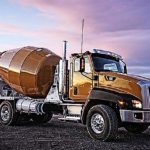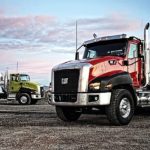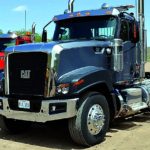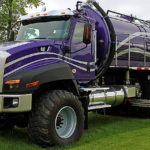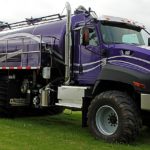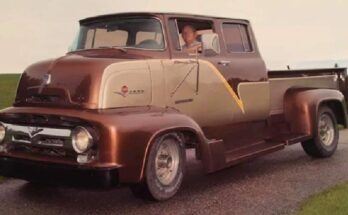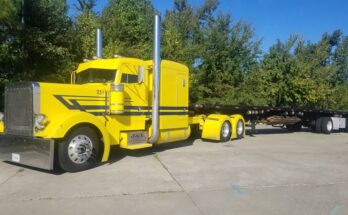Last year, Caterpillar shocked the heavy equipment world by announcing their retirement from the game, even though a year previously in 2015, they had committed to building their own trucks. The CT660, CT680, and CT681 will no longer be produced, though there will be support for those vehicles already being used. The vehicles, sold only through licensed Caterpillar Inc. merchants, will continue to be used on the road until they are no longer capable of being repaired.
The CT660, a class-8 vocational truck, is used for highway trucking and was built using Navistar’s facilities in Garland, Texas. The specifications for this particular vehicle include axles from either Meritor, Dana, or Fabco, fuel tanks with the capacity to carry between 60-120 gallons of fuel at a time, multileaf shackle or slipper type suspension, heat-treated alloy steel frame rails, and Set-Back Axle (SBA) (166 or 122 inch available). It comes with a Cat CT13 diesel, 4-cycle engine (365-475 horsepower), a Cat CX31 Automatic Transmission ( with maximum input speed of 2500 rpm).
Since 2011, Caterpillar has partnered with Navistar to produce its vehicles. The plan in 2015 was to separate from Navistar and set up a manufacturing plant in Victoria, Texas, in order to commit fully to creating their own trucks, which would allow for more control over the designs and specifications. Unfortunately, the move, time, and finances that would have allowed Caterpillar total control were deemed to be too high, and the company has decided to shut the project down.
Ramin Younessi, the Vice President for the Caterpillar Industrial Power Systems Division, stated, “Remaining a viable competitor in this market would require significant additional investment to develop and launch a complete portfolio of trucks, and upon an updated review, we determined there was not a sufficient market opportunity to justify the investment,” which led to the decision to cancel the move to Victoria, Texas, as well as consolidate the number of employees to cut costs, which will happen gradually throughout the next year at least.
If Caterpillar’s history is anything to go by, however, we will still probably see plenty of their class-8 trucks remain on the roads for some time. Caterpillar is known for its rugged, heavy-duty equipment as well as its maintenance and support available to owners and operators, both of which ensure the longevity of Caterpillar’s popular vehicles.
Despite the decision to forego building their own production facilities due to a lack of ability to compete with larger brands who produce more popular class-8 trucks such as Freightliner and Kenworth, Caterpillar will still remain as one of the most reliable producers of other heavy-duty equipment for building and transportation. It remains to be seen, however, whether Caterpillar will find another niche to fill or if it will just stick with what it knows best, which is nothing to sneeze at, since Caterpillar is the largest construction equipment manufacturer in the world, producing vehicles, engines, insurance, and even a clothing line for its loyal customers. Dedicated to environmental concerns, economic developments in developing countries, and innovation will continue to sustain Caterpillar beyond the present day and into the future.
 " >
" >
